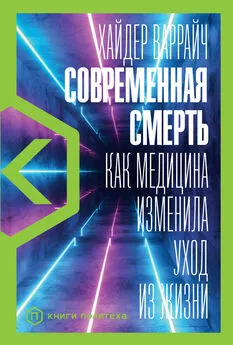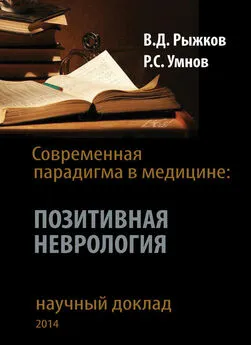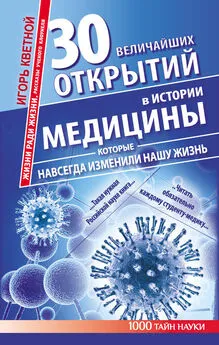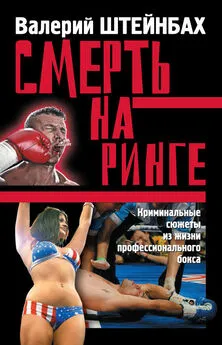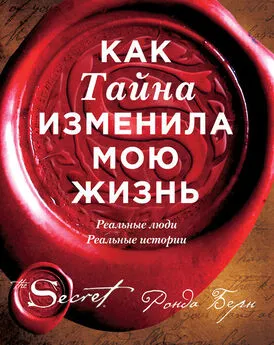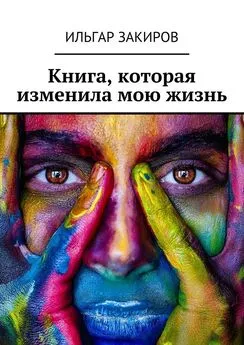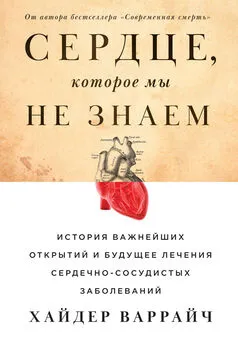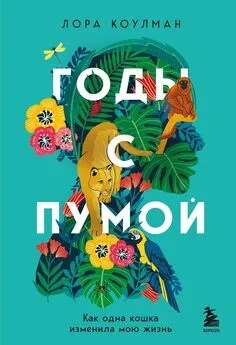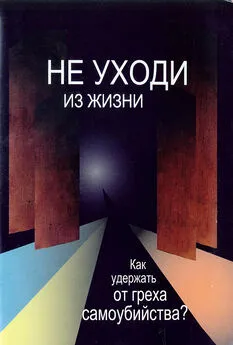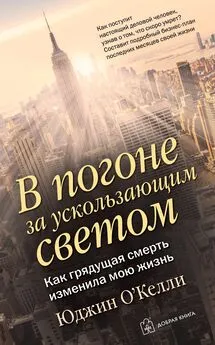Хайдер Варрайч - Современная смерть. Как медицина изменила уход из жизни
- Название:Современная смерть. Как медицина изменила уход из жизни
- Автор:
- Жанр:
- Издательство:Альпина нон-фикшн
- Год:2021
- Город:Москва
- ISBN:978-5-0013-9427-3
- Рейтинг:
- Избранное:Добавить в избранное
-
Отзывы:
-
Ваша оценка:
Хайдер Варрайч - Современная смерть. Как медицина изменила уход из жизни краткое содержание
По сравнению с серединой XX столетия радикально изменились все аспекты окончания нашей жизни — от чего мы умираем, когда умираем, где умираем и как умираем. В результате прогресса медицинской науки и медицинских технологий даже само определение смерти теперь формулируется иначе — что уж говорить о ее экологии, эпидемиологии, экономике и этике. Американская медицина прошла за это время огромный путь освоения новых подходов к смерти и умирающим — путь, на который в некоторых отношениях еще только предстоит вступить России. В своей дебютной книге доктор Варрайч рассказывает о сегодняшних ритуалах смерти и о ее современном языке — и на основе своего опыта лечащего врача в отделении интенсивной терапии крупной американской больницы задумывается о том, что лучше получалось у наших предков и в чем мы явно превзошли их.
Современная смерть. Как медицина изменила уход из жизни - читать онлайн бесплатно ознакомительный отрывок
Интервал:
Закладка:
242
Gairdner W. Case of lethargic stupor or trance. Lancet . 1884; 123 (3150): 56–58.
243
Williamson J. Premature burial. Scientific American . May 9, 1896.
244
Anabiosis — life in death. Literary Digest . August 22, 1914: 304.
245
Baldwin JF. Premature burial. Scientific American . October 24, 1896: 315.
246
To stop premature burial; bill introduced yesterday in the assembly by Mr. Redington of New York. New York Times . January 19, 1899.
247
Alexander M. «The Rigid Embrace of the Narrow House»: premature burial & the signs of death. Hastings Cent Rep . 1980; 10 (3): 25–31.
248
Beecher, Ethical problems [См. «Как изменилось определение смерти», прим. 28].
249
What and when is death? JAMA . 1968; 204 (6): 539-40.
250
Watson CJ, Dark JH. Organ transplantation: historical perspective and current practice. Br J Anaesth . 2012; 108 (suppl 1): i29-42.
251
Merrill JP, Murray JE, Harrison JH, Guild WR. Successful homotransplantation of the human kidney between identical twins. JAMA . 1956; 160 (4): 277-82.
252
Machado C. The first organ transplant from a brain-dead donor. Neurology . 2005; 64 (11): 1938-42.
253
Powner et al., Medical diagnosis.
254
Iltis AS, Cherry MJ. Death revisited: rethinking death and the dead donor rule. J Med Philos . 2010; 35 (3): 223-41.
255
DeVita MA, Snyder JV. Development of the University of Pittsburgh Medical Center policy for the care of terminally ill patients who may become organ donors after death following the removal of life support. Kennedy Inst Ethics J . 1993; 3 (2): 131-43.
256
Institute of Medicine. Non-Heart-Beating Organ Transplantation. Practice and Protocols. Committee on Non-Heart-Beating Transplantation II: The Scientific and Ethical Basis for Practice and Protocols . Washington, DC: Institute of Medicine; 2000.
257
Halazun KJ, Al-Mukhtar A, Aldouri A, Willis S, Ahmad N. Warm ischemia in transplantation: search for a consensus definition. Transplant Proc . 2007; 39 (5): 1329-31.
258
Institute for Health Metrics and Evaluation, The state of US health [see «How Life (and Death) Were Prolonged», note 9].
259
John 11: 1-45.
260
Sheth KN, Nutter T, Stein DM, Scalea TM, Bernat JL. Autoresuscitation after asystole in patients being considered for organ donation. Crit Care Med . 2012; 40 (1): 158-61.
261
Krarup NH, Kaltoft A, Lenler-Petersen P. Risen from the dead: a case of the Lazarus phenomenon — with considerations on the termination of treatment following cardiac arrest in a prehospital setting. Resuscitation . 2010; 81 (11): 1598-99.
262
Shewmon DA. Mental Disconnect: «Physiological Decapitation» as a Heuristic For Understanding Brain Death . Scripta Varia 110. Vatican City: Pontifical Academy of Sciences; 2007.
263
White RJ, Wolin LR, Massopust LC Jr, Taslitz N, Verdura J. Cephalic exchange transplantation in the monkey. Surgery . 1971; 70 (1): 135-99.
264
Lizza JP. Where’s Waldo? The «decapitation gambit» and the definition of death. J Med Ethics . 2011; 37 (12): 743-46.
265
www.neurology.org/content/82/10_Supplement/P4.285.
266
www.washingtontimes.com/news/2015/may/10/jury-doctor-who-had-affair-with-patient-must-pay-h/.
267
United States President’s Commission for the Study of Ethical Problems in Medicine and Biomedical and Behavioral Research. Defining Death: A Report on the Medical, Legal and Ethical Issues in the Determination of Death . 1981.
268
Levy DE, Caronna JJ, Singer BH, Lapinski RH, Frydman H, Plum F. Predicting outcome from hypoxic-ischemic coma. JAMA . 1985; 253 (10): 1420-26.
269
Wijdicks EF, Hijdra A, Young GB, Bassetti CL, Wiebe S. Practice parameter: prediction of outcome in comatose survivors after cardiopulmonary resuscitation (an evidence-based review): report of the Quality Standards Subcommittee of the American Academy of Neurology. Neurology . 2006; 67 (2): 203-10.
270
Culotta E. On the origin of religion. Science . 2009; 326 (5954): 784-87.
271
Henshilwood CS, d’Errico F, Watts I. Engraved ochres from the Middle Stone Age levels at Blombos Cave, South Africa. J Hum Evol . 2009; 57 (1): 27–47.
272
Vandermeersch B. The excavation of Qafzeh. Bulletin du Centre de recherche français à Jérusalem . 2002; 10: 65–70.
273
Culotta, On the origin of religion.
274
Barrett JL. Exploring the natural foundations of religion. Trends Cogn Sci . 2000; 4 (1): 29–34.
275
Povinelli DJ, Preuss TM. Theory of mind: evolutionary history of a cognitive specialization. Trends Neurosci . 1995; 18 (9): 418-24.
276
Kelemen D. Why are rocks pointy? Children’s preference for teleological explanations of the natural world. Dev Psychol . 1999; 35 (6): 1440-52.
277
Kelemen D, Rosset E. The human function compunction: teleological explanation in adults. Cognition . 2009; 111 (1): 138-43.
278
Harris P. On not falling down to earth: children’s metaphysical questions. In: Rosegren K, Johnson C, Harris P, eds. Imagining the Impossible: Magical, Scientific, and Religious Thinking in Children . Cambridge University Press; 2000.
279
Sosis R. Religious behaviors, badges, and bans: signaling theory and the evolution of religion. In: McNamara P, ed. Where God and Science Meet: How Brain and Evolutionary Studies Alter Our Understanding of Religion . Vol 1. Praeger; 2006: 61–86.
280
Sosis R, Bressler, ER. Cooperation and commune longevity: a test of the costly signaling theory of religion. Cross Cultural Research . 2003; 37: 211-39.
281
Bering JM, Blasi CH, Bjorklund DF. The development of afterlife beliefs in religiously and secularly schooled children. Br J Dev Psychol . 2005; 23 (4): 587–607.
282
Becker E. The Denial of Death . Reprint ed. Free Press; 1987.
283
Rosenblatt A, Greenberg J, Solomon S, Pyszczynski T, Lyon D. Evidence for terror management theory, I: the effects of mortality salience on reactions to those who violate or uphold cultural values. J Pers Soc Psychol . 1989; 57 (4): 681-90.
284
Rosenblatt et al., Evidence.
285
Pyszczynski T, Abdollahi A, Solomon S, Greenberg J, Cohen F, Weise D. Mortality salience, martyrdom, and military might: the great satan versus the axis of evil. Pers Soc Psychol Bull . 2006; 32 (4): 525-37.
286
Landau MJ, Solomon S, Greenberg J, Cohen F, Pyszczynski T, Arndt J, et al. Deliver us from evil: the effects of mortality salience and reminders of 9/11 on support for President George W. Bush. Pers Soc Psychol Bull . 2004; 30 (9): 1136-50.
287
Yum YO, Schenck-Hamlin W. Reactions to 9/11 as a function of terror management and perspective taking. J Soc Psychol . 2005; 145 (3): 265-86.
288
Jong J, Halberstadt J, Bluemke M. Foxhole atheism, revisited: the effects of mortality salience on explicit and implicit religious belief. J Exp. Med . 2012; 48 (5): 983-89.
289
Dezutter J, Soenens B, Luyckx K, Bruyneel S, Vansteenkiste M, Duriez B, et al. The role of religion in death attitudes: distinguishing between religious belief and style of processing religious contents. Death Studies . 2009; 33 (1): 73–92.
290
Pyne D. A model of religion and death. J Exp. Med . 2010; 39 (1): 46.
291
Kübler-Ross E. On Death and Dying . Simon and Schuster; 1969: 479-83.
292
Branson R. The secularization of American medicine. Stud Hastings Cent . 1973; 1 (2): 17–28.
293
Gallup. Religion. 2014. www.gallup.com/poll/1690/religion.aspx.
294
Koenig HG. Religious attitudes and practices of hospitalized medically ill older adults. Int J Geriatr Psychiatry . 1998; 13 (4): 213-24.
295
Roberts JA, Brown D, Elkins T, Larson DB. Factors influencing views of patients with gynecologic cancer about end-of-life decisions. Am J Obstet Gynecol . 1997; 176 (1 Pt 1): 166-72.
296
Breitbart W, Gibson C, Poppito SR, Berg A. Psychotherapeutic interventions at the end of life: a focus on meaning and spirituality. Can J Psychiatry . 2004; 49 (6): 366-72.
297
Vachon M, Fillion L, Achille M. A conceptual analysis of spirituality at the end of life. J Palliat Med . 2009; 12 (1): 53–59.
298
Shahabi L, Powell LH, Musick MA, Pargament KI, Thoresen CE, Williams D, et al. Correlates of self-perceptions of spirituality in American adults. Ann Behav Med . 2002; 24 (1): 59–68.
299
Halstead MT, Fernsler JI. Coping strategies of long-term cancer survivors. Cancer Nurs . 1994; 17 (2): 94-100; Gall TL. The role of religious coping in adjustment to prostate cancer. Cancer Nurs . 2004; 27 (6): 454-61; VandeCreek L, Rogers E, Lester J. Use of alternative therapies among breast cancer outpatients compared with the general population. Altern Ther Health Med . 1999; 5 (1): 71–76.
300
Yates JW, Chalmer BJ, St James P, Follansbee M, McKegney FP. Religion in patients with advanced cancer. Med Pediatr Oncol . 1981; 9 (2): 121-28.
301
Smith TB, McCullough ME, Poll J. Religiousness and depression: evidence for a main effect and the moderating influence of stressful life events. Psychol Bull . 2003; 129 (4): 614-36.
302
McClain CS, Rosenfeld B, Breitbart W. Effect of spiritual well-being on end-of-life despair in terminally-ill cancer patients. Lancet . 2003; 361 (9369): 1603-7.
303
Koffman J, Morgan M, Edmonds P, Speck P, Higginson IJ. «I know he controls cancer»: the meanings of religion among Black Caribbean and White British patients with advanced cancer. Soc Sci Med . 2008; 67 (5): 780-89.
Читать дальшеИнтервал:
Закладка:
